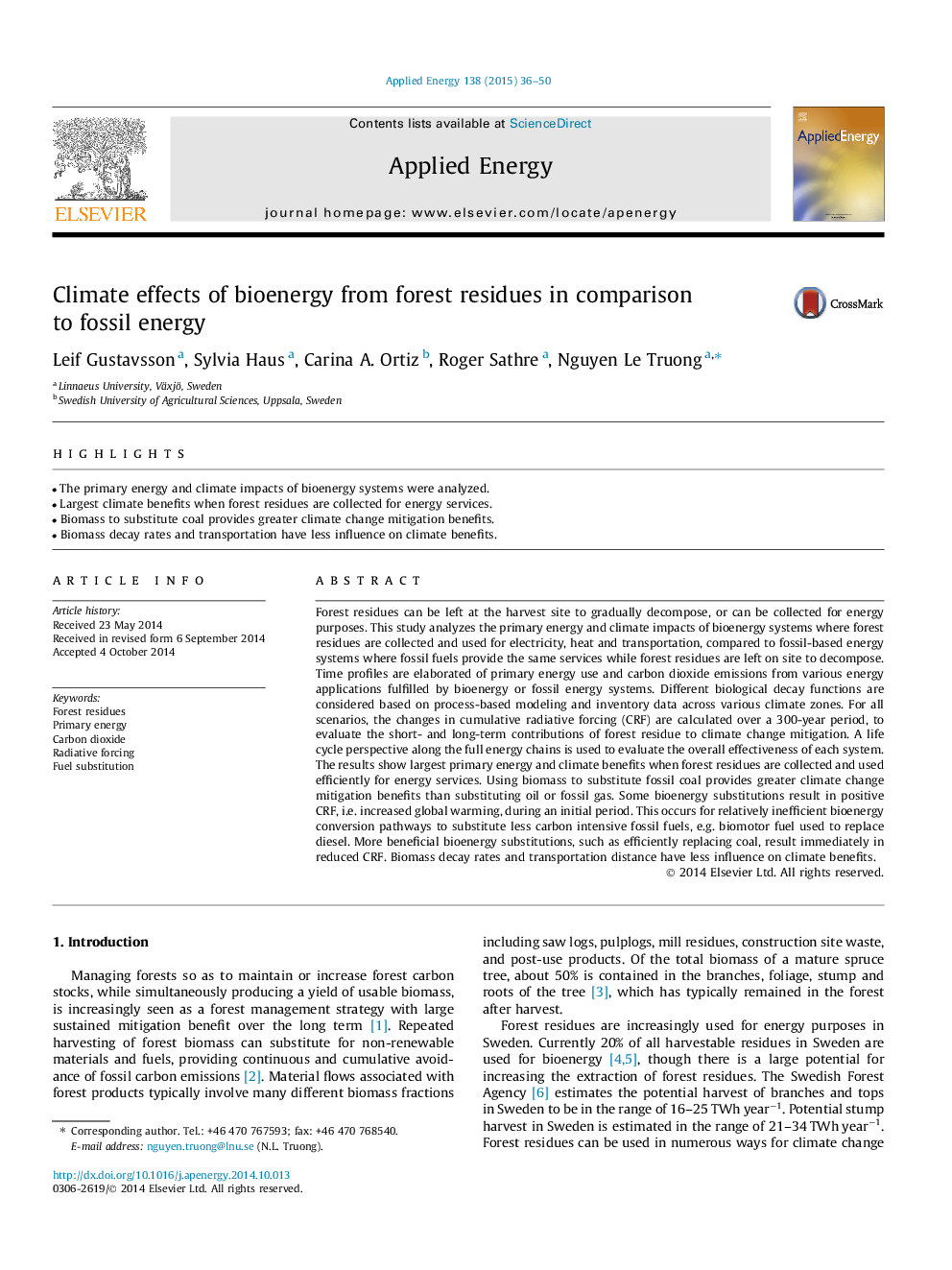| کد مقاله | کد نشریه | سال انتشار | مقاله انگلیسی | نسخه تمام متن |
|---|---|---|---|---|
| 6688133 | 501886 | 2015 | 15 صفحه PDF | دانلود رایگان |
عنوان انگلیسی مقاله ISI
Climate effects of bioenergy from forest residues in comparison to fossil energy
ترجمه فارسی عنوان
اثرات زیست محیطی اثرات آب و هوایی از بقایای جنگل نسبت به انرژی فسیلی
دانلود مقاله + سفارش ترجمه
دانلود مقاله ISI انگلیسی
رایگان برای ایرانیان
کلمات کلیدی
بقایای جنگل، انرژی اولیه، دی اکسید کربن، اعمال تابشی، جایگزینی سوخت،
موضوعات مرتبط
مهندسی و علوم پایه
مهندسی انرژی
مهندسی انرژی و فناوری های برق
چکیده انگلیسی
Forest residues can be left at the harvest site to gradually decompose, or can be collected for energy purposes. This study analyzes the primary energy and climate impacts of bioenergy systems where forest residues are collected and used for electricity, heat and transportation, compared to fossil-based energy systems where fossil fuels provide the same services while forest residues are left on site to decompose. Time profiles are elaborated of primary energy use and carbon dioxide emissions from various energy applications fulfilled by bioenergy or fossil energy systems. Different biological decay functions are considered based on process-based modeling and inventory data across various climate zones. For all scenarios, the changes in cumulative radiative forcing (CRF) are calculated over a 300-year period, to evaluate the short- and long-term contributions of forest residue to climate change mitigation. A life cycle perspective along the full energy chains is used to evaluate the overall effectiveness of each system. The results show largest primary energy and climate benefits when forest residues are collected and used efficiently for energy services. Using biomass to substitute fossil coal provides greater climate change mitigation benefits than substituting oil or fossil gas. Some bioenergy substitutions result in positive CRF, i.e. increased global warming, during an initial period. This occurs for relatively inefficient bioenergy conversion pathways to substitute less carbon intensive fossil fuels, e.g. biomotor fuel used to replace diesel. More beneficial bioenergy substitutions, such as efficiently replacing coal, result immediately in reduced CRF. Biomass decay rates and transportation distance have less influence on climate benefits.
ناشر
Database: Elsevier - ScienceDirect (ساینس دایرکت)
Journal: Applied Energy - Volume 138, 15 January 2015, Pages 36-50
Journal: Applied Energy - Volume 138, 15 January 2015, Pages 36-50
نویسندگان
Leif Gustavsson, Sylvia Haus, Carina A. Ortiz, Roger Sathre, Nguyen Le Truong,
